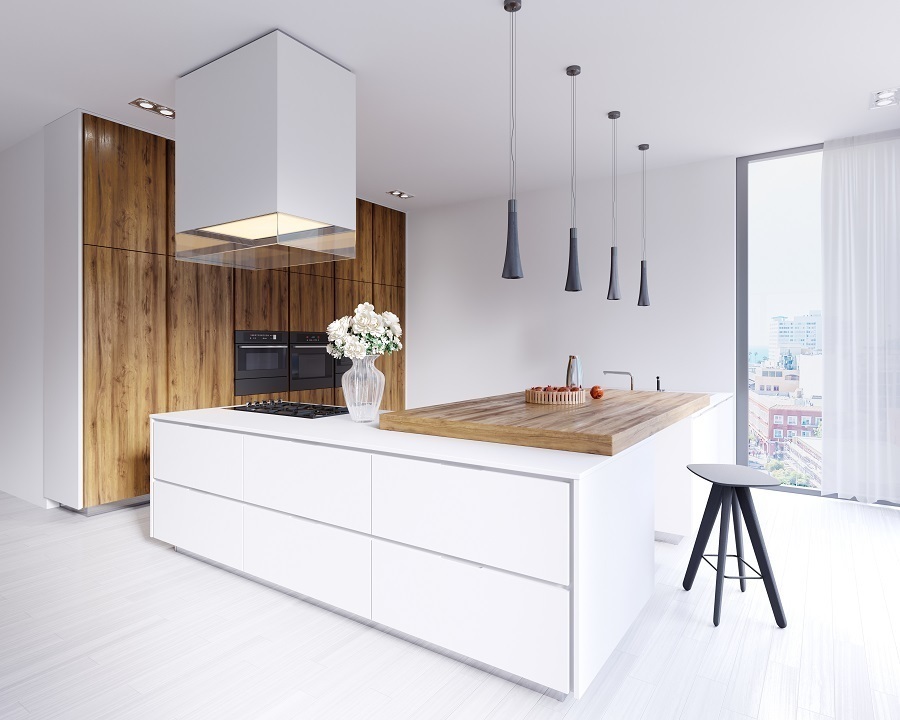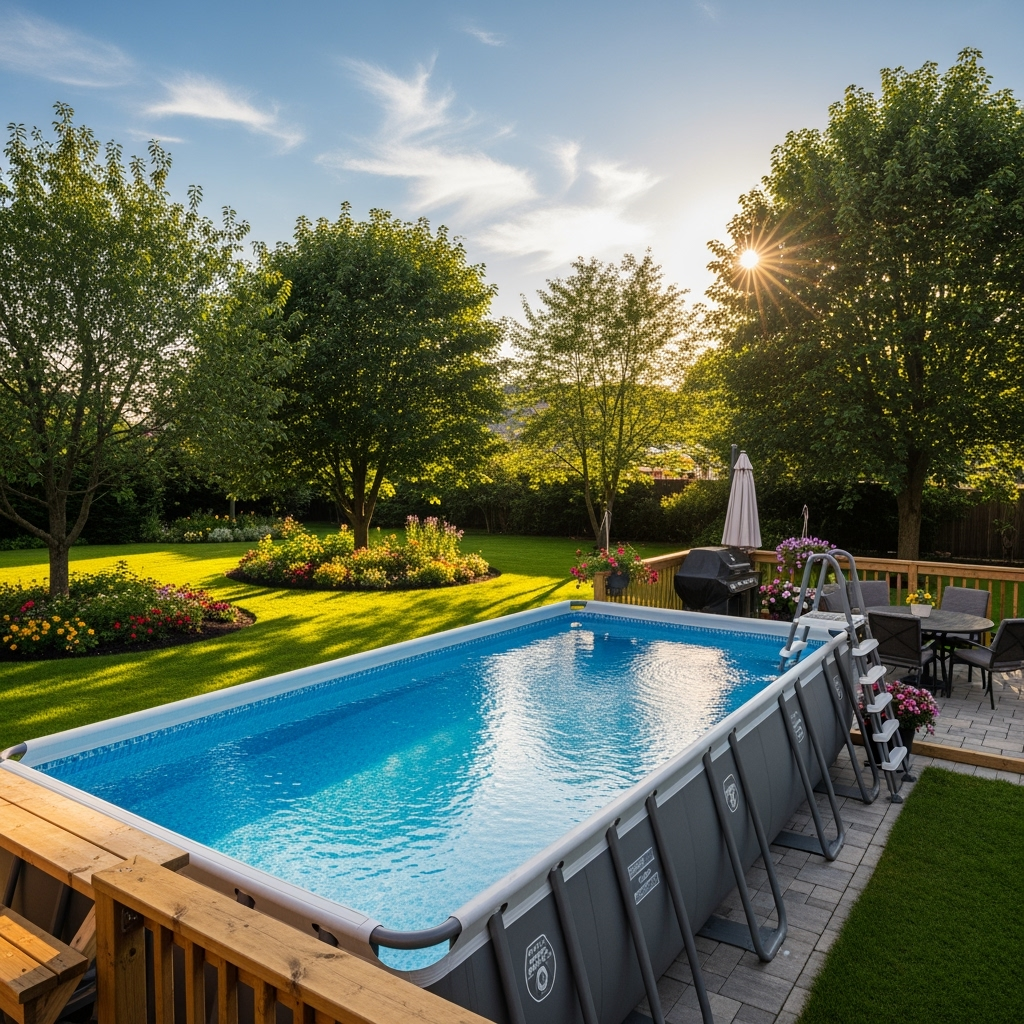Last updated on
How much light bulb wattage you need for your kitchen pendant lights depends on the space it needs to light up. Generally, you need to supply 60 to 75 watts incandescent bulbs (10 to 15 watts LED) for every 20 inches of the counter.
Let’s assume your pendant lights hang above a kitchen island (although it can also be a dining table.) Here are all the factors you need to consider when deciding the best wattage for the light bulbs.
Keep in mind that it depends on the type of bulbs and the style of the pendants, including how high they are above the surface.
Let’s begin!
What's Inside
How Much Light Do You Need for the Kitchen Island?

The best wattage for kitchen pendant lights ranges from 35 to 50 lumens per square foot for kitchen island areas. Your specific choice depends on your lighting references — such as natural light, a preference for brighter illumination, or preferring dim and relaxing light. For a 20-square-foot island, you need 700 to 1,000 lumens.
Converting watts to lumens can be further complicated by the different lighting choices available. 100 watts of incandescent light equals the lumen output of 13W to 18W LED lighting, 20W compact fluorescent bulbs, and 70W halogen lights. A 100-watt incandescent bulb converts to about 1,600 lumens.
Cheating strategy: Ask Google to make the conversion from a specific type of light wattage to lumens.
Wattage for Island Pendants
As a general rule, you should determine the number of pendants you need to supply 60 to 75 watts incandescent bulbs (10 to 15 watts LED) for every 20 inches of the counter. You can’t avoid doing some math based on wattage or lumens. Start by visualizing your space and finding pendants that match your preferred decorating style. Pendants come in three distinct styles: open shade facing down, pen shade facing up, and mini pendants. Focus on the wattage of your chosen pendants.
The height of your pendants plays a role. You need 60-75 watts for every 20 inches. It’s essential to provide an unobstructed view, so place the pendant bottoms about 28 inches to 30 inches above the counter. Depending on the mood you want to foster, you might prefer lower voltage or mini pendants for their design. Task lighting works best with standard voltage pendant lights.
Light Bulb Wattage and Light Fixtures
Light fixtures should have a maximum wattage rating, and it’s essential to use the correct number of bulbs with a combined wattage rating that doesn’t exceed the limit. However, some fixtures don’t always work safely in certain circumstances, and you might need to adjust the limit downward. For example, recessed lights can often overheat because of heat buildup. Trapped heat can even scorch the wood. Some fixtures have internal insulation that wears out over time.
If you ever detect scorch marks or a burning odor, the fixture exceeds its capacity regardless of the stated limit. Shut off the light immediately, and turn off the power at the fuse box.
Wattage Rating of the Light Fixture
Every light fixture is engineered to handle light bulbs that match or fall under the maximum wattage. Use the following steps to find the wattage rating of a light fixture:
- Inspect the fixture’s socket, and you’ll find a silver sticker that lists the maximum wattage.
- Take the cover off of a ceiling light, and you’ll usually find a sticker near or located on the sockets that lists the highest wattage the socket is designed to support.
- Look for the installation instructions included with new boxed fixtures. They usually list the maximum wattage that the fixture can support.
- Wattage is also frequently listed on the box to help consumers choose the correct bulbs for their fixtures.
- Don’t confuse lumens with watts, and make any necessary conversions.
- If using an old fixture without the recommended wattage, stick to 60 watts or less with incandescent bulbs or any size of compact fluorescent lights.
Measure Your Space
Choosing the right-sized fixture for a given room requires measuring the room. Measure the width and length of the room, and add the two figures together. Convert the total directly from feet to inches. For example, 20 feet becomes 20 inches. 20 inches is the diameter of the best-sized light fixture for this room.
Size Scale
Scaling the size of light fixtures requires following some basic guidelines. If the room is smaller than 10′ by 10′, you should choose a fixture that’s 17″ long by 20″ wide. Rooms measuring about 12′ feet squared should be 22″ long or deep by 27″ wide. Rooms measuring 14′ by 14′ feet take a fixture 24″ long or deep by 32″ wide.
Shade Styles
The three most common fixture shade styles include Spider, Uno, and Clip-on. However, you choose many styles and colors, including round, bell, cylinder, square, oval, hexagonal, and others. Choose a shade that most closely matches the lamp’s shape, but recognize that some shapes allow or prevent placing the fixture close to walls or furniture.
Measuring the bottom diameter of the lamp or fixture guides your choice of placement because the fixture must fit within the allotted space. You should choose a shade for your lamp or fixture that falls within 2 inches — plus or minus — of the bottom diameter of the fixture.
Wattage by Type of Pendant Lights
Most modern pendant lights match the typical wattage of incandescent lights — at least, they did before 100-watt bulbs were outlawed. Today, changes wrought by LED lights and energy-saver bulbs often confuse the issue. Wattage measures energy output and usage and not the level of light lumens. Pendant wattage should never exceed the fixture’s limits or cord’s limits. Practically, you can find 75W, 60W, and 40W and lower wattage pendant lights.
You won’t find 100-watt bulbs except as leftover rarities, but you can find 100-watt equivalent LED light bulbs that supply the same number of lumens as 100-watt incandescent bulbs used to deliver.
Wattage by Type of Light Bulbs
Most incandescent bulbs include 24, 40, 60, and 75-watt bulbs, and pendant lights also take these sizes. Compact fluorescent light bulbs come in sizes from 2 watts to 200 watts, but these lights use less electricity than incandescent bulbs.
Modern LED light bulbs come in sizes that match the light output of most bulbs while using only a fraction of the energy. The bulb last years or decades, and you can replace any bulb with an LED equivalent. Halogen bulbs come in 15W, 25W, 40W, and 45W sizes, which produce more light than comparable incandescent bulbs.
Light Color Temperature
Light color temperature doesn’t have anything to do with heat or cold. The color scale ranges from 2,700 Kelvin to 6,500 Kelvin. The “temperature” describes the shade of colors produced by light. You can find LED lights in various colors like yellows, reds, and oranges, termed warm colors. Blue and green are defined as cool colors. The colors generally define how decorative objects lit by LED lights appear as cool and crisp or
Energy Efficiency Considerations
Builders, designers, and homeowners increasingly consider energy efficiency when choosing to light. LED lights outperform other lighting types by a wide margin. LED lights typically use 75% less energy, and the bulbs can last for 10-20 years. That makes the lighting perfect for outdoor installations, hard-to-reach areas, and cost-conscious homeowners and landowners.




